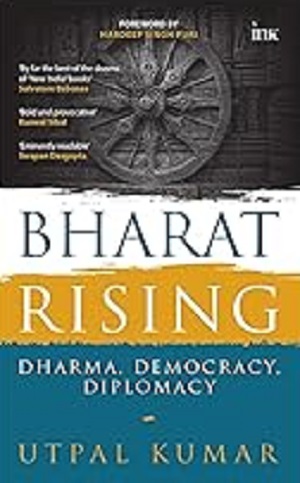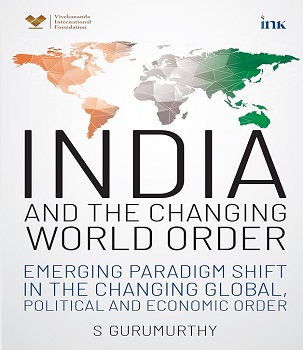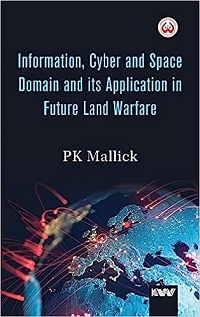Ideas & Ideologies That Provoked World War I Still Pose A Threat
Many books have been written about the First World War, especially in recent years, as more information emerges in the public domain. This year – the hundredth anniversary of the outbreak – there has been special attention to the War, and to the question of whether this was a war nobody wanted or whether it was the result of preparation on the part of the belligerent European Powers. The British, who claim to have acquired an empire in a fit of absent-mindedness, tend, by and large, to suggest that most of history is cock-up. The idea that nobody wanted the War is politically helpful in that nobody is then guilty of starting the war.
However, the First World War has been the subject of more thorough study and debate ever since Fritz Fischer wrote his seminal work in 1961, asserting that the Germans, at least, had planned well in advance for the War. The evidence also shows that the Germans were fully involved in the Austrian ultimatum to the Serbs in July 1914. In fact, according to McMeekin, they were stiffening the Austrian spine from behind the scenes, with the objective of facing the Russians [then allied with the Serbs] in a war, and the sooner the better. This was because Russia was among the fastest-growing economies in the world in the early decades of the 20th century, and had an ambitious military modernisation programme to boot.
A similar search among the plans of the other belligerents shows that none of them really stumbled – sleepwalked is the term used by yet another historian in a recent book – into the War. And it is important, particularly today, to understand what the belligerents went into the War thinking and strategising. Much of the world as we know it today, especially in Asia and Europe, is the result of the territorial arrangements that emerged from that War. If that arrangement is under strain today – it indubitably is – it is worth studying what the rival strategies were, for we may well see them prevailing, in whole or in part, in the 21st century.
McMeekin’s book is another contribution to the counter-narrative, and he correctly focuses on the Berlin-Baghdad Railway as the symbol of the strategic planning that Wilhelmine Germany put into practice in seeking to undermine the maritime dominance of the British Empire. As the book points out, Baghdad itself was not the prize, but the Persian Gulf, and the land route from Berlin outpaced the sea route, even through the Suez Canal by three days. Von Biberstein, the ex-Staatsekretar and later Ambassador to the Sublime Porte, made it clear that the Railway was intended to supplant the British and the French in Turkey and the Near East; for this, the project had to be exclusively in German hands. The Sultan-Caliph understood the strategic importance too – he had restive Arab and Kurdish subjects in the distant provinces, and the Railway would enable his armies to move speedily to all these areas if required.
The British did not take this challenge seriously until the Liberal victory in 1905, when the new Foreign Secretary, Sir Edward Grey, entered into strategic accommodations with France [the “Entente Cordiale”], and even more importantly, with Russia, in the 1907 Convention covering Persia, Afghanistan, and Tibet. The fact is that the Railway made very slow progress, and the mountainous gaps were completed only in 1940. But it was troublesome enough for the British to launch the Gallipoli expedition early in 1915, with the aim of cutting off the land link from Berlin to Anatolia. Plus, of course, there was much more to the planning on both sides.
In addressing these other aspects of the strategies of the belligerents, the book covers many more issues than just the Railway. It covers the rival strategies of the Entente and the Central Powers in terms of inciting Jihad among the Muslim populations of the region for their respective ends, and of encouraging the Jews, and the nascent Zionist movement to influence the outcome of the War.
What the narrative tells us is that the Germans had at the ready, as early as August 1914, a detailed plan under the long but expressive title, “Overview of the Revolutionary Activity we will Undertake in the Islamic-Israelite World”. Couple this with the strategic value of the long-planned Berlin-Baghdad Railway, and that adds up to a serious strategy for challenging British global supremacy. Kaiser Wilhelm had already paid a visit to Istanbul [as well as Jerusalem – more on this later] and had professed himself an admirer of Islam. Whatever his sentiments, he was also aware of the political utility of the Muslims, and he told Tsar Nicholas II – the Kaiser, the Tsar and the British King-Emperor were all related by blood – that the Sultan-Caliph could turn the Muslims against the British. In his words, as quoted by McMeekin:
Remember what you and I agreed upon at Peterhof never to forget that the Mahometans were a tremendous card in our game in case you or I were suddenly confronted by a war with a certain meddlesome Power!
The tale of how the Germans sought to use Muslim loyalty to the Sultan-Caliph against the British is pursued at length. It turns out that Madrassas in India were raising money for the Caliph as early as 1910, which should explain why the abolition of the Caliphate after the War created such a stir in India. The Germans were planning on getting the Caliph to proclaim a Jihad against the British and their allies and succeeded in doing so. They also sent expeditions to Persia and Afghanistan under some of their most experienced agents and specialists in Asian affairs, but got only token support at very high prices. Perhaps most relevant, as early as August 1914 itself, the Germans had agents working on the ground for plans to create an “Islamic Baluchistan”, while the Turks also had agents in the subcontinent.
It is also very revealing that the Germans also worked with the same Arab leaders – the Sauds, the Hashemites and the Rashid – as did the British; in fact, these men were all inclined towards the Germans in 1914 – 15, and switched over to the British only later, as the War progressed.
There is one curious error in the narrative that the author weaves: he argues that the British gave only vague and oral promises to the Arabs. In fact, the Hussein-McMahon correspondence, and particularly McMahon’s letter of 24 October 1915 gives very precise details of the British territorial offer. The contradictory pledges that McMeekin describes only appeared after the Balfour Declaration of 2 November 1917. And this, as the author notes, was duly pointed out even then by several officials, including Gilbert Clayton, the political adviser to Gen Allenby.
The other interesting point to emerge from McMeekin’s narration is that both the Germans and the British, including TE Lawrence [“of Arabia”], held a not very high opinion of the fighting qualities of the Bedouin. In his description of the first attack on the Suez through the Sinai, McMeekin shows that the Germans were bitterly disappointed in the lack of discipline, among other shortcomings, of the Arabs. It does, however, also provide a clue as to the importance of the Zionist movement, which was also asserting itself at this time.
One noteworthy feature of recent histories of this period is the openness with which the Bolshevik connection with the Germans and the Jews is acknowledged. McMeekin is part of this telling: repeatedly in the book, he tells us that the second plank of the German strategy in the War was to use the clout of the Jews in both Russia and the US to influence developments concerning the War. The idea of using the Bolsheviks, whose leadership very largely consisted of Jews, to overthrow the Tsar and push Russia out of the War was a grand success.
Not so the idea of promoting a homeland for the Jews in Palestine. The Kaiser met Theodor Hertzl twice in Jerusalem and expressed support for the idea of a homeland for the Jews. Equally, there were German attempts to help Jewish immigration into Palestine as early as 1915. In fact, the author quotes the London Times as saying in 1911 that, the leaders of the Zionist movement were “Yiddish-speaking Jews, all of whom understand German”. However, the direct threat this represented to the Ottoman Empire meant that there were limits to how far the Germans could go in pursuing this policy. So long as the Germans were allies of the Ottomans, they could obviously not go beyond a point in promoting the Zionist cause.
The British had no such constraint, though they had Arab opinion to consider. But there was a strong feeling that the US could be persuaded to play a more active role if the influential Jewry in that country could be brought onside – it had already entered the War on the side of the Entente in January 1917 after the leak of the Zimmerman telegram offering Mexico the southern US states if it would declare war on the US. The Balfour Declaration was the result of this thinking, and it also served to protect the Suez Canal from eastward.
It is the final chapter – the Epilogue – that the author is really at his best. There is a short summary of the grand narrative, and the cost to the Germans of the failure to complete all segments of the Berlin-Baghdad Railway in time. But the most telling is the brief study of the aftermath of the defeat of Germany in the War. The legend of the “stab in the back” and its consequences inside Germany and outside are important lessons. Most important is the linkage with the contemporary situation: many have observed, in various contexts, the similarity between the world today and the pre-First World War situation. But it is really in the Balkans and the Middle East that the parallels are unsettling. Almost as if talking in code, the author says, “...the toxic self-pitying disease which gave rise to Nazism is still abroad in the world, if no longer so prevalent in Germany itself.” And he closes the book by saying, of the idea of fanning religious sentiment to win the War, the
foolish Emperor spent [his] his civilisational inheritance promoting an atavistic version of pan-Islam devoted to the destruction of that civilisation and to the murder of the Christians and Jews who had forged it. It was a breathtaking error in judgement and we are all living with its consequences today.
And that appears to be the main conclusion of the book: that the ideas, ideologies and strategies that led to the catastrophic War in 1914 have been revived in recent years, and these pose a threat in many parts of Europe and Asia even today. Of course, not everyone will endorse these conclusions; not everyone will agree on where the fault lies, even if they agree on the nature of the danger facing the region. But McMeekin has given us much to ponder over.











Post new comment